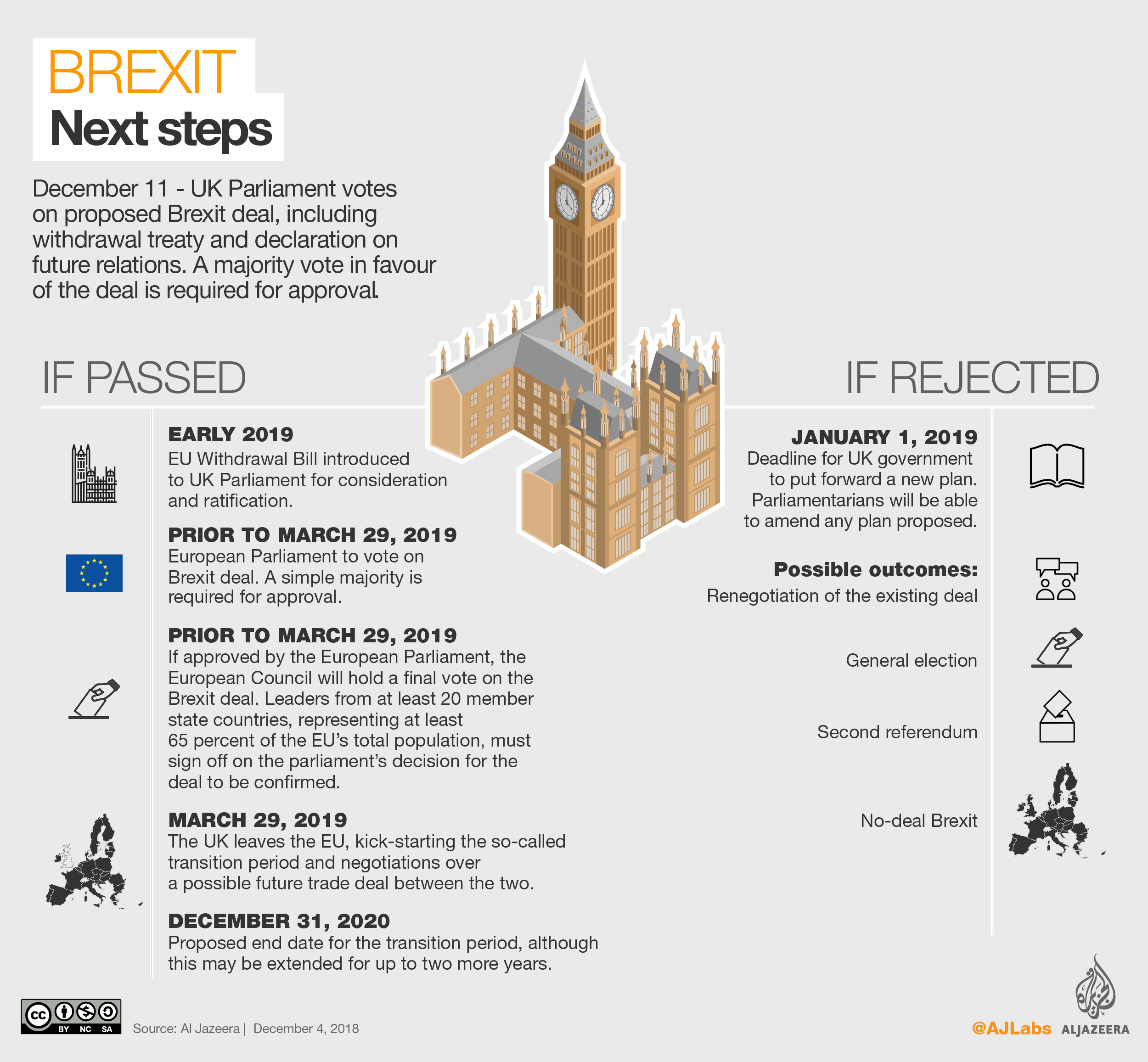The declaration on a framework for future relations, meanwhile, sets out how the UK and EU will work together after Brexit on areas as trade and security. (Reuters)
British Prime Minister Theresa May faces a parliamentary showdown on Tuesday over her Brexit deal.
The proposal, which she has agreed with European leaders, has little support across the political spectrum and is expected to be rejected by the lower chamber House of Commons in a so-called meaningful vote.
Here is what you need to know:
What is the vote on?
Parliament will be voting on whether to approve the European Union withdrawal agreement and a declaration on future relations settled on by May and European leaders following months of back-and-forth negotiations.
The withdrawal plan includes provisions on citizens’ rights, the transition period and the so-called backstop arrangement concerning the Irish border, among other issues.
The declaration on a framework for future relations, meanwhile, sets out how the UK and EU will work together after Brexit on areas as trade and security.
When will the vote take place?
The vote is scheduled to take place at around 19:00 GMT. A result will be announced shortly afterwards.
How will the vote work?
It is a simple majority vote.
All 650 members of parliament (MPs) in the Commons are eligible to vote, with a majority required for approval.
Around 320 votes are needed to guarantee a majority as there are a handful of non-voting members of the house such as the speaker and others who don’t take up their seats.
Abstentions or absent MPs could mean the figure required for a majority is lower, however.
The unelected upper chamber House of Lords will not vote on the government’s proposed deal.
Why is it unlikely to pass?
Opposition to the deal is fierce. There are two central arguments against it.
The first is that the draft agreement is a watered down, inadequate version of the country’s existing EU membership arrangement.
The second is that the deal fails to deliver on a clean break with the European project.
Scores of May’s ruling Conservative Party MPs are expected to reject her proposal, while several opposition parties including the main opposition Labour Party have also said they will refuse to back it.

If May manages to win, what happens next?
The government will introduce an EU Withdrawal Agreement Bill to parliament for consideration and ratification, most likely in early 2019.
The bill will be subject to full parliamentary scrutiny, involving several rounds of possible amending and voting.
If passed, the European Parliament and European Council will then each be required to sign off on the withdrawal plan prior to March 29 next year, when the UK is scheduled to depart the EU.
This will be followed by a so-called transition period and negotiations over a possible future trade deal between the two. EU law prevents such talks from taking place while the UK is still a member state.
And if she loses?
It’s unclear.
Legally, the government will have 21 days to bring forward a new plan of action to parliament. That could provide May with a window of opportunity to go back to Brussels and push for revised terms of departure from the bloc.
But even if she wins concessions from European leaders, which is not guaranteed, MPs will be able to table amendments on a fresh proposal, potentially forcing the government to alter its Brexit strategy once again.
Alternatively, May might push for a second parliamentary vote on the same withdrawal agreement in the hope the electoral arithmetic is changed by fears that a second rejection would risk a potentially catastrophic no-deal Brexit.
Political events triggered by a parliamentary rejection on Tuesday could derail that entire process and take events out of the prime minister’s hand, however.
A leadership challenge, general election, second referendum, substantially renegotiated deal or no-deal Brexit are all possible outcomes. — Al Jazeera